Types of Volvo Fuel Pressure Sensors
A Volvo fuel rail pressure sensor is designed to monitor the pressure in the fuel system, sending signals to the ECU to help regulate fuel pressure and volume for optimal engine performance. Understanding the different types and their components is essential for proper selection and maintenance.
Key Components of Volvo Fuel Pressure Sensors
Pressure-Sensitive Element
A thin diaphragm made of stainless steel that bends as fuel pressure changes, providing the physical measurement mechanism.
Electronic Component
A Wheatstone bridge circuit with four resistors and a semiconductor that measures the change in electrical current as the diaphragm bends.
Protective Housing
Shields the internal components from the fuel's corrosive properties and environmental factors to ensure longevity and reliable operation.
Sensor Types Based on Signal Output
| Sensor Type | Working Principle | Advantages | Disadvantages | Common Use in Volvo Models |
|---|---|---|---|---|
| Voltage-Based | Sends signals to ECU by changing voltage (0-5V or 0-10V) | Simple, affordable, widely available | Less accurate than other types | Most common in Volvo vehicles |
| Frequency-Based | Sends signals as pulses with changing frequency | Higher accuracy, better noise immunity | More expensive, complex installation | Higher-end models and performance vehicles |
| Digital Signal | Sends digital information about fuel pressure | Precise readings, immunity to electrical noise | Requires compatible ECU system | Newer Volvo models with advanced electronics |
| Piezoelectric | Generates electrical charge proportional to pressure | Self-powered, excellent for high-pressure systems | Higher cost, specialized applications | Specialized performance applications |
Expert Tip: Most Volvo fuel pressure sensors are voltage-based with the 5V sensor measuring 0-5 bar range and the 10V sensor measuring 0-10 bar range. When replacing sensors, matching the correct voltage and pressure range specifications is critical for proper engine performance.
Approximate distribution of sensor types in Volvo vehicles
Specifications of Volvo Fuel Pressure Sensors
Model Types
Volvo fuel pressure sensors are available in different model numbers including 30756098, 31272732, 31272730, 31411654, and 31454139. Each is designed for specific vehicle models and engine configurations.
Key function: Measures pressure in the fuel rail (in PSI or bars) and sends voltage signals to the ECM for air/fuel ratio adjustments.
Materials & Construction
Sensor housings are typically made of reinforced plastic or metal to ensure durability in harsh engine environments. Internal components use precision materials for accurate readings.
Sealing: Rubber O-rings prevent fuel leakage and contaminant entry between the mounting surface and sensor housing.
| Specification | Details | Importance |
|---|---|---|
| Electrical Connection | Connector plug or wire leads compatible with vehicle's electrical system | Critical for proper signal transmission to ECU |
| Pressure Range | Varies by model; must match vehicle fuel system requirements | Determines accuracy of pressure readings |
| Mounting Type | Vehicle-specific; may require special hardware or brackets | Ensures secure installation and proper function |
| Operating Voltage | Typically 5V or 12V depending on sensor type | Must match vehicle electrical system |
| Operating Temperature | -40°C to +125°C (-40°F to +257°F) | Must withstand engine bay temperatures |
| Replacement Frequency | As needed when faulty; not a regular maintenance item | Replace promptly when issues are detected |
Maintenance of Volvo Fuel Pressure Sensors
Proper maintenance of Volvo fuel pressure sensors is essential for optimal vehicle performance, fuel efficiency, and reliability. Following these maintenance practices will help extend the lifespan of your sensor and prevent costly repairs.
| Maintenance Task | Frequency | Procedure | Importance |
|---|---|---|---|
| Visual Inspection | Every 15,000 miles or 1 year | Check for signs of damage, wear, or fuel leaks around sensor | High - Prevents system failure |
| Electrical Connection Check | Every 15,000 miles or 1 year | Inspect for corrosion, secure connection, and wire damage | Critical - Ensures proper signal transmission |
| O-Ring Inspection | When sensor is removed | Check for cracks, hardening, or damage; replace if necessary | High - Prevents fuel leaks |
| Diagnostic Testing | When symptoms occur | Use OBD2 scanner to check for error codes (P0190, P0193) | Critical - Identifies sensor failures |
| Environmental Protection | Ongoing | Shield from extreme heat, moisture, and contaminants | Medium - Extends sensor life |
Warning: Ignoring fuel pressure sensor issues can lead to decreased fuel efficiency, poor engine performance, and potentially serious engine damage. If you notice symptoms like rough idling, hesitation during acceleration, or poor fuel economy, check the sensor immediately.
Maintenance Tip: When cleaning around the fuel pressure sensor, use only appropriate automotive electrical system cleaners. Never use water or general-purpose cleaners as they can damage the sensor's electronic components or cause short circuits.
How to Choose Volvo Fuel Pressure Sensors
Selecting the right fuel pressure sensor for your Volvo is critical for ensuring optimal engine performance, fuel efficiency, and reliability. Follow these steps to choose the correct sensor for your specific vehicle.
1 Determine Pressure Range Requirements
Select a sensor with a pressure range suitable for your specific Volvo model's fuel system. Operating pressure is typically measured in bars or PSI and must be compatible with your engine specifications.
2 Identify the Required Sensor Type
Determine whether you need a fuel rail pressure sensor (measures pressure directly at the fuel rail) or a fuel tank pressure sensor (monitors pressure in the fuel tank for emissions control).
3 Verify Accuracy Specifications
Check the sensor's accuracy level (usually expressed as a percentage of full-scale reading). Higher accuracy sensors provide more precise fuel system operation but may cost more.
4 Confirm Vehicle Compatibility
Ensure the sensor is compatible with your Volvo's make, model, year, and engine type. Consult with suppliers or the manufacturer to verify compatibility before purchase.
5 Check Signal Output Compatibility
Verify the sensor's signal output (voltage or frequency) is compatible with your vehicle's engine control module. Most modern Volvos use 0-5V voltage signals.
6 Consider Installation Requirements
Select a sensor that comes with clear installation instructions and any necessary mounting hardware for your specific Volvo model.
Selection Tip: When possible, choose OEM (Original Equipment Manufacturer) sensors or high-quality aftermarket alternatives from reputable brands. While they may cost more initially, they typically offer better reliability, accuracy, and longevity compared to generic options.
OEM Sensors
- Perfect fit and compatibility
- Guaranteed quality standards
- Often includes proper connectors
- Higher initial cost
- Best for newer vehicles
Quality Aftermarket
- Good compatibility
- Reliable performance
- Lower cost than OEM
- Varying warranty periods
- Good for most applications
Budget Options
- Lowest initial cost
- Variable quality control
- May require additional work to fit
- Shorter lifespan
- Best for temporary fixes
How to DIY and Replace Volvo Fuel Pressure Sensor
Replacing a Volvo fuel pressure sensor is a straightforward process that most DIY enthusiasts can handle with basic tools. Follow this comprehensive guide to safely and effectively replace your vehicle's fuel pressure sensor.
Required Tools and Materials
- Socket and ratchet set
- Screwdrivers (flathead and Phillips)
- New fuel pressure sensor (correct model for your Volvo)
- Wrench set
- Socket extension
- Torque wrench
- Cleaning rags
- Safety glasses
- Gloves
- OBD2 scanner (optional, for diagnostics)
Step-by-Step Replacement Guide
1 Preparation
Park your Volvo on a flat surface and engage the parking brake. Allow the engine to cool completely to avoid burns. Wear safety glasses and gloves throughout the procedure.
2 Disconnect Battery
Use a wrench to disconnect the negative terminal of the battery first, then the positive terminal. This prevents electrical shorts and potential fires during the replacement process.
3 Locate the Sensor
Consult your Volvo's owner manual to locate the fuel pressure sensor. It's typically situated on the fuel rail (the pipe that supplies fuel to the engine's injectors) and may be on either the driver's or passenger's side.
4 Clean the Area
Thoroughly clean the area around the sensor with a clean rag to prevent debris from entering the fuel system when the sensor is removed.
5 Disconnect Electrical Connector
Carefully disconnect the electrical connector from the sensor. Most connectors have a tab or clip that must be pressed to release the connector.
6 Remove the Old Sensor
Use an appropriate-sized wrench or socket to unscrew the sensor from the fuel rail. Turn counterclockwise to loosen. Be extremely cautious not to damage the fuel lines as they are delicate.
7 Clean Connection Points
Use a clean rag to wipe the connection area where the sensor attaches to the fuel rail. Check for any signs of fuel leaks or damage to the fuel lines.
8 Install New Sensor
Carefully thread the new fuel pressure sensor into place by hand first to avoid cross-threading. Then use a torque wrench to tighten to the manufacturer's specifications (typically 15-20 Nm).
9 Reconnect Electrical Connector
Reattach the electrical connector to the new sensor, ensuring it clicks or locks into place securely.
10 Reconnect Battery and Test
Reconnect the battery terminals (positive first, then negative). Start the engine and check for any fuel leaks around the sensor. The engine should run smoothly without any warning lights on the dashboard.
Safety Warning: Always work in a well-ventilated area when handling fuel system components. Keep fire extinguishers nearby and avoid any open flames or sparks. If you smell fuel during or after the replacement, shut off the engine immediately and check for leaks.
DIY Tip: If your check engine light remains on after replacement, use an OBD2 scanner to clear any stored error codes. If codes like P0190 or P0193 reappear, there may be an issue with the new sensor's installation or a wiring problem that requires further troubleshooting.
Frequently Asked Questions
A Volvo fuel pressure sensor can be tested using an OBD2 scanner to monitor the fuel pressure data while the engine is running. Compare these readings with the specifications in your vehicle's service manual to verify proper operation. For a more accurate test, you can use a mechanical fuel pressure gauge connected to the fuel system to compare actual pressure with the sensor readings. If the readings don't match or if you're getting error codes like P0190 or P0193, the sensor may be faulty and require replacement.
The fuel pressure sensor in Volvo vehicles is typically located on the fuel rail in the engine bay. The exact position varies by model:
- In most Volvo models with 4-cylinder engines, it's on the high-pressure fuel rail on the top side of the engine
- For 5-cylinder and 6-cylinder engines, it's often found on the driver's side of the engine bay
- In newer models with direct injection, it may be positioned at the end of the fuel rail near the firewall
Consult your specific model's service manual for the exact location, as it can vary significantly between different Volvo series and model years.
If your Volvo's fuel pressure sensor is faulty, it should be replaced immediately to prevent further issues. A failing sensor can cause:
- Poor engine performance (hesitation, surging, or stalling)
- Decreased fuel efficiency
- Hard starting or no-start conditions
- Potential damage to the engine or emissions systems
When replacing the sensor, always use a high-quality OEM or equivalent part specifically designed for your Volvo model. After replacement, use an OBD2 scanner to clear any stored error codes. It's also advisable to check related components like the Volvo D13 oil pressure sensor to ensure your vehicle's entire pressure monitoring system is functioning correctly.
Volvo fuel pressure sensors typically last between 80,000 to 100,000 miles under normal driving conditions. However, this can vary significantly based on driving habits, fuel quality, and environmental conditions. Some sensors may last the lifetime of the vehicle, while others might fail prematurely. Regular inspection during routine maintenance can help identify potential issues before they lead to sensor failure or engine performance problems.
Common symptoms of a failing Volvo fuel pressure sensor include:
- Check engine light illumination
- Rough idling or stalling
- Difficulty starting the engine
- Decreased fuel efficiency
- Engine hesitation during acceleration
- Inconsistent engine performance
- Engine misfires
- Sudden power loss while driving
If you experience any of these symptoms, it's advisable to have the fuel system diagnosed promptly to prevent further issues.









































































































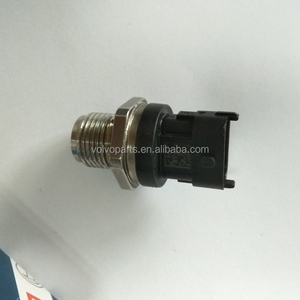

























































































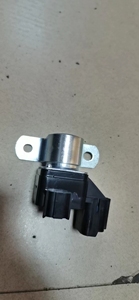








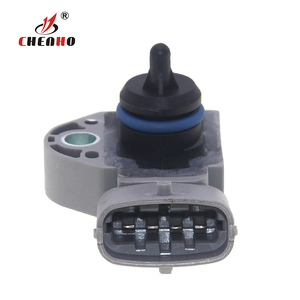
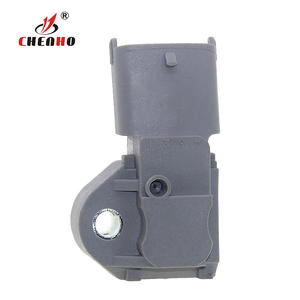
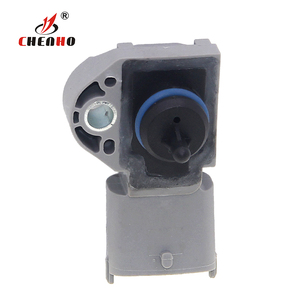

































 浙公网安备 33010002000092号
浙公网安备 33010002000092号 浙B2-20120091-4
浙B2-20120091-4